- Submitted by Dahlia
(Plain Layered Paratha, Triangle Layered Chapati, Madata Chapati, Ghadichi Poli, Trikon Parota)
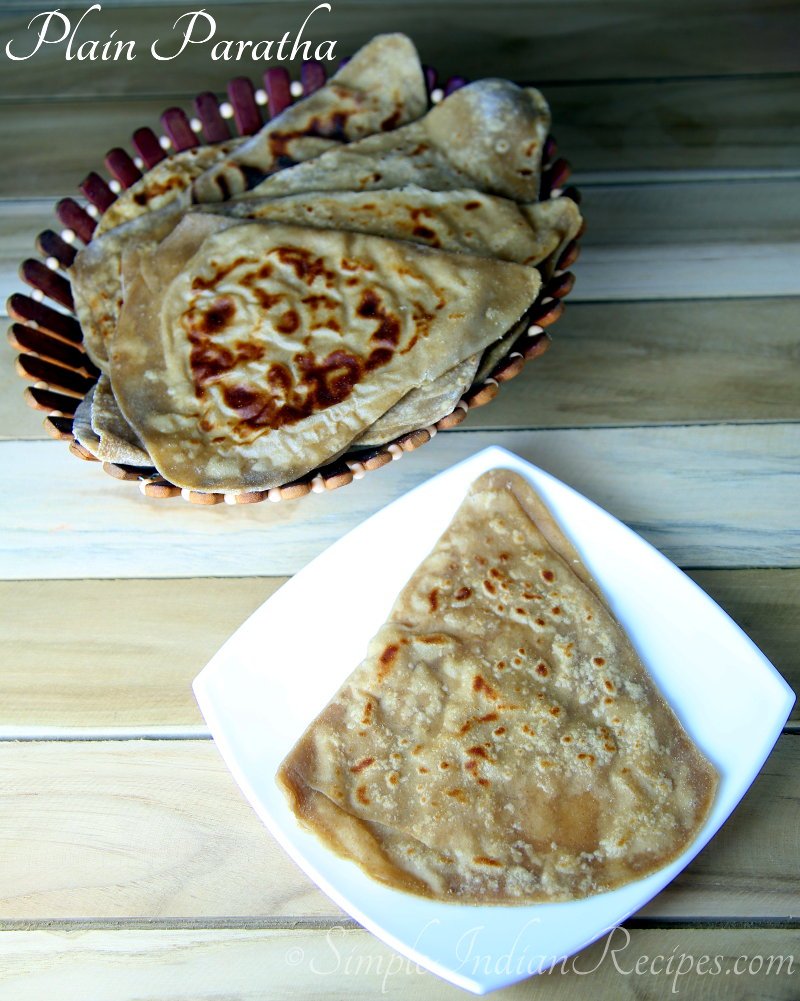
Jump to recipe ↓
Paratha are a type of flat bread made with whole wheat flour or atta flour. In North India there are so many varieties of unleavened flat bread made with wheat flour. Though plain parathas are made with the same wheat flour as chapati and phulka, it tastes and looks different. It is thicker than the regular chapati due to the different method of rolling it and layering. I have already shared about stuffed parathas in a different post. Here I will be sharing about the types of Plain Paratha.
Plain Layered Parathas are also called as Tawa Wali Lachha Parathas are made in North and Eastern parts of India. In Maharashtra it is called the Ghadichi Poli. It is called just parathas in Orissa and Trikon Parota in Bengal. It is commonly made in triangular, round or square shapes. After the parathas are cooked, you can see several distinct layers. The outer layers are crisp while the inner layers are soft. The layers are achieved by rolling the dough and folding it with some ghee and plain flour in between. It is then rolled again. When the rolled out paratha is cooked, the layers separate out making it very soft. Some people like to fill the layers with some stuffing like chutney or sabzi.
As I said above, there are different ways of folding and rolling the dough to create the layers in the paratha. Here I have shared a few ways of doing it.
Recipe For Plain Layered Paratha
Preparation Time: 20 minutes
Cooking Time: 30 minutes
Serves: 3
Ingredients
- Wheat flour - 1.5 cups
- Salt - 1 tsp
- Oil - 1 tbsp (for making dough)
- Cumin seeds (jeera) / Carom seeds (ajwain) - 1 tsp (optional)
- Oil - for frying the parathas
- Warm Water - as needed (app. 3/4 cup)
- Oil/Ghee - 3-4 tbsp (for layering)
- Dry Flour - for rolling
Method
- Mix the flour, salt and oil. Add the warm water little by little and knead the dough. Cover and let it rest for at least 15 minutes.
- Knead the dough again and make lemon sized balls. Dip each ball into dry flour and roll it out into a small disc using a rolling pin.
- Spread 2-3 drops of oil on this rolled out roti. Sprinkle little dry flour on it. After this step the roti is folded in few different ways to get the layers before cooking. I have explained fours different types of folds below. Fold and roll the paratha using any of the methods explained below.
- Heat a tawa on medium high heat and place the rolled out paratha on it. When light brown spots appear, flip the paratha. Drizzle/Spray few drops of oil/ghee.
- After both the sides are cooked, remove from the tawa and transfer to a hot pack or a closed container to maintain its softness. When you break the paratha, you can see the layers distinctly.
Type 1 (Triangle Paratha)
In the rolled out roti, spread few drops of oil/ ghee all over and sprinkle some dry flour on it. Fold it in half to form a semi circle. Spread 2-3 drops of oil/ghee again and sprinkle little dry flour. Fold the semi circle into half so that it forms a triangle. Roll out this into a bigger triangular roti.
Type 2 (Circular Laccha Paratha)
This method is similar to the one used to make Kerala Parotta. For this, first roll out the roti, spread some oil and sprinkle dry flour. Then beginning with one side, fold it over and under alternatively just like making a paper fan or saree pleets. Roll the pleated dough lengthwise to form a ball of dough with layers. Now roll it out again with a rolling pin and roast it. These rotis will have multiple layers.
Type 3 (Square Paratha)
Another option is to make layered square parathas. For this after applying the oil and flour on the rolled out roti, fold it into a square shape and proceed.
Type 4 (Simple Circular Paratha)
This is a very simple method for beginners. Just make 2-3 small rotis. Place one roti over the other separated by little oil and flour . Seal the edges and roll out till you get a thin paratha.
Detailed Steps For Triangle Layered Paratha
Take the flour (1.5 cup), 1 tbsp of oil and salt in a large mixing bowl. Sometimes I like to add a tsp of cumin seeds (jeera) or carom seeds (ajwain) also which gives a nice flavor to the final parathas. Today I have made it plain.
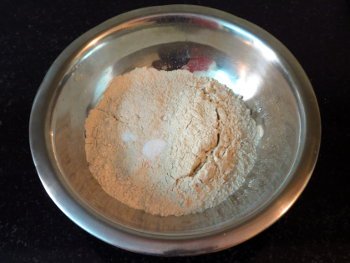
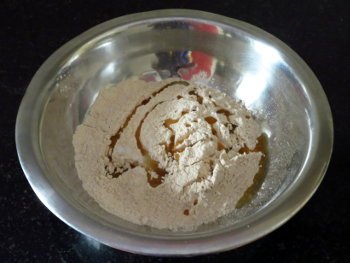
Add warm water little by little and keep kneading the dough. Knead the dough nicely till it becomes soft.

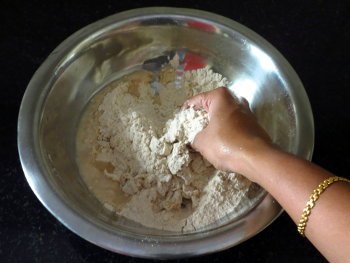
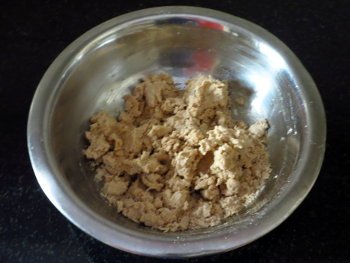
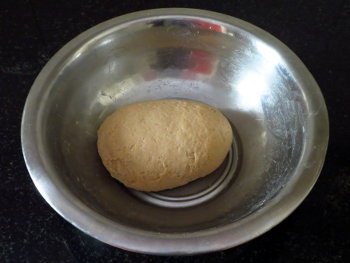
Cover it with a damp kitchen towel, plastic wrap or just a lid and let it rest for at least 15 minutes. This resting will make the dough soft and pliable.
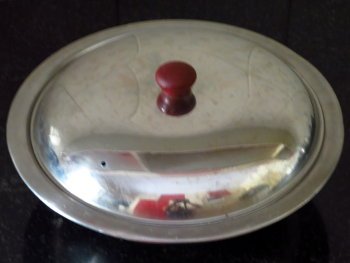
Knead the dough again and make lemon sized balls.
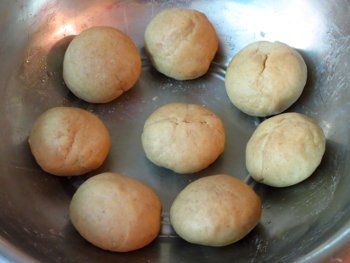
Dip each ball into dry flour and roll it out into a small disc using a rolling pin.
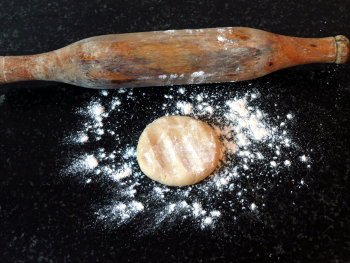
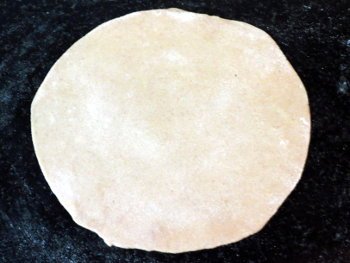
After this step the roti is folded in different ways as mentioned above. I have explained the triangular method of folding with pictures here. Start by spreading 2-3 drops of oil on this rolled out roti. I usually take a mix of oil and ghee in the ratio 3:1 and keep in a small bowl. I use it for this. Sprinkle little dry flour on it.
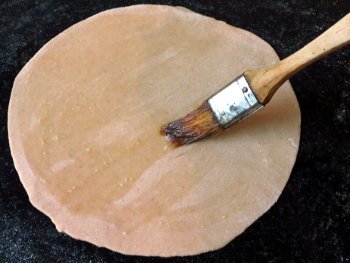
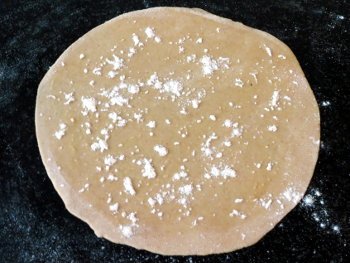
Fold it in half to form a semi circle.
Spread 2-3 drops of oil-ghee mixture again and sprinkle some dry flour.
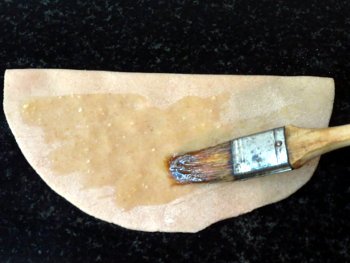
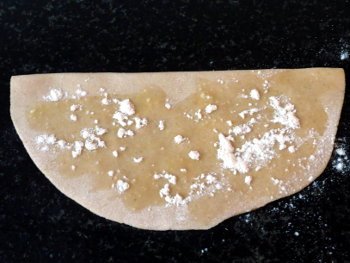
Fold the semi circle into half so that it forms a triangle. Roll out this into a bigger triangular roti. If you are not able to maintain the triangular shape, then roll it out like as a circle. Either way the layers will be there.

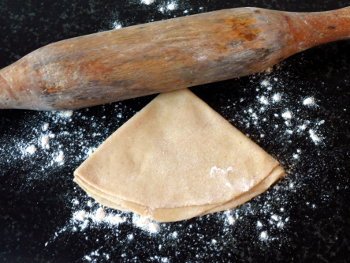
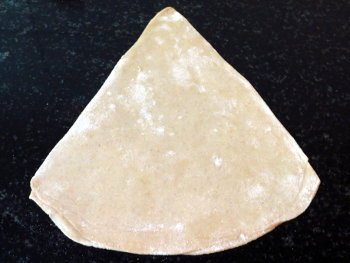
Heat a tawa or griddle on medium high heat. Transfer the rolled out paratha on it and cook for a minute.
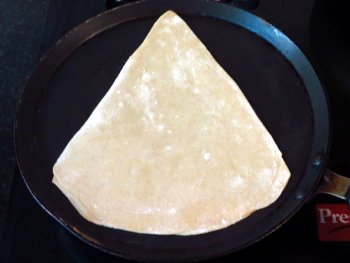
When light brown spots appear in the bottom side, flip the paratha. Drizzle few drops of oil-ghee mixture. Cook until both sides get some brown spots. Remove from the tawa and transfer to a hot box to maintain its softness. When you take a piece of the paratha, you can see the layers separating. Serve with your favorite curry and enjoy.
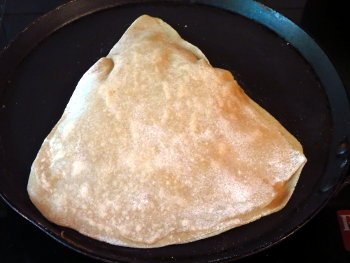
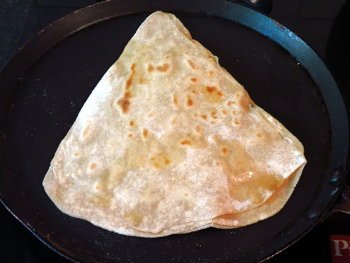
Serving Plain Paratha
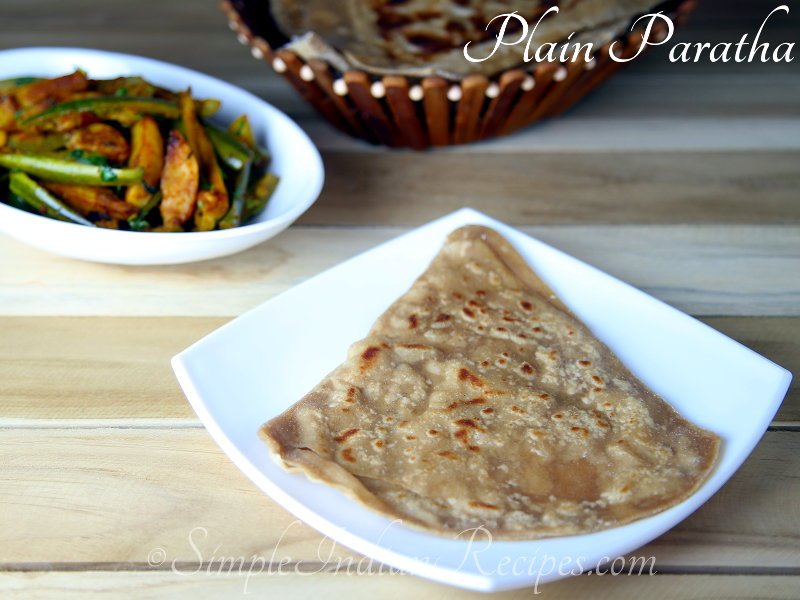
More Paratha Varieties